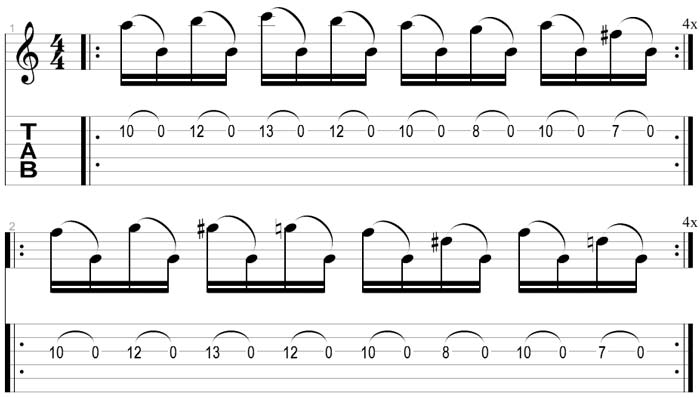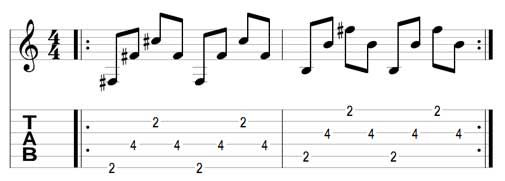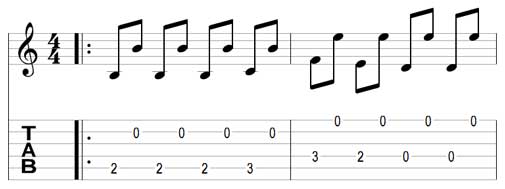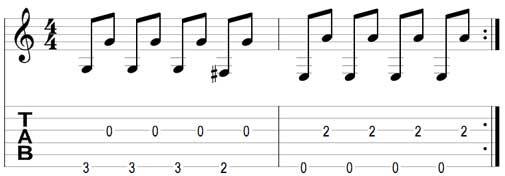In this three part series we will look at how to identify and correct any bad habits that you may have right now. This first part will explain how you can recognize bad habits in your own playing. Correcting bad habits is so important for every guitarist which is why this crucial topic has been spread across three separate posts.
Why you need to correct any bad habits
It doesn’t matter if you want to become an expert player or if you just want to play for fun, you need to stop any bad habits from forming. Even habits that may seem minor can significantly impact your ability to play over time. The main problem with bad habits is that they’re very easy to form and very hard to fix. Nobody is perfect and it’s okay to acknowledge that you probably have some bad habits right now that you may not may not even realize.
The main benefit you will get out of correcting any bad habits is the freedom to play guitar the way you want. Bad habits restrict you and halt your progress. It’s not very fun to have pain in your hand or arm because a bad habit is forcing you to play awkwardly. Take your time to fix these problems and you will enjoy guitar a lot more as well as be able to do a lot more.
How to identify bad habits
Let’s look at a very effective method you can use to identify any bad habits you may have already formed. The method is pretty straight forward – record a video of yourself playing. This doesn’t have to be a great quality video. Any digital camera or even a webcam will do the job.
Set up your camera in front of you and make sure your entire body is in the frame. Make sure you wear a T-shirt or any short sleeve shirt so you can see your arms clearly. Hit record and play for about one minute going through a wide range of material. Do some improvising, play some riffs you know well, try some solos, scale runs and anything else you normally play.
Once you finish playing load your video up on your computer or TV. This is important because you need to watch the video on a big screen to properly see what is happening. Watching the video on the small camera screen or phone isn’t going to help.
Watch the video and for the first viewing just listen to what you’re playing. Think about the below questions while watching the video:
- Does everything sound the way you expect it to sound?
- Do you notice any problems with your playing that you didn’t notice while playing?
- Do all the notes ring out clearly?
- Was there any string noise or any other noise you didn’t notice while playing?
Ask yourself the above questions about the sound of your playing and the overall feel. This is possibly the most important point because the whole purpose of correcting any bad habits is to improve your playing. If you can pick up any obvious problems in your playing now it’s going to give you the biggest room for improvement.
For the second viewing, really focus on your picking hand. Don’t look at anything else and just keep your eyes focus on what your hand is doing and it’s position. This time think about the below questions while watching your picking hand:
- Does it look awkward?
- Does your hand look tense?
- Does your arm look tense?
- Do you see any arm muscles tense up while you play?
- Does your hand lock in position or is it loose?
- Does your hand float above the strings or do you anchor your hand using one of your fingers?
If you sometimes feel pain in your picking hand, the above questions will help you identify the problem.
For the next viewing, focus completely on your fretting hand. Think about these questions:
- Do you use your fingertips to fret the notes?
- How does your pinky move?
- Does your pinky hide behind the neck or does it stick out in the air?
- How many fingers do you use? Do you tend to only use two fingers or do you use all four?
- Does your thumb stick up over the neck?
- Is your thumb held to the side or does it point up to the air?
- Is there a gap between your hand and the neck?
- Does your hand look tense?
- Does your hand flow up and down the neck or is your movement erratic and jumpy?
Next, keep focus on your arm for your fretting hand. This often reveals many issues that aren’t obvious when just looking at the hand. Think about the following questions:
- Does any part of your arm seem tense?
- Does your elbow seem stiff or does it move freely when you move up and down the neck?
- Are you holding your arm close to your body or is it free to move around?
- Does the position of the guitar force your arm into an awkward angle?
Finally, have a look at your overall body posture. This is important as it’s often the last thing people think about when playing. Think about these questions while you watch the video again:
- Are you slouched forward?
- Does your head hang low as you try to look over the fretboard?
- Are you sitting up straight with your shoulders back?
- Is your body twisted with your legs crossed or over to one side?
- Are your feet flat on the ground?
- Does any part of your body seem tense?
What to look out for
If you take the time to follow the steps above and critically look at your posture and playing technique, you will no doubt pick up on habits you didn’t even realize you had. If you didn’t find anything wrong with your posture or technique, maybe you need to think about which is more likely: you’re a perfect player or you didn’t look hard enough. Even expert players will be able to find minor problems they can correct. Don’t kid yourself and claim you have perfect technique because the only person who loses is you in that case.
This is an opportunity to prevent any issues before they turn serious. If you recognize that your arms are always tense when you play, unless you correct it now you could end up with serious issues years down the track. Even small issues such as your pinky hiding behind the neck can limit your abilities later on.
Next steps
Follow the steps above and really have a close look at your playing. Play the video over and over and even look at it in slow motion. If you’re honest with yourself and pick up on problems you will be a lot better off. After you follow this advice, save the video and re-record another video in one or two week’s time. Repeat the same steps and see if you’ve made any improvements. The more times you repeat this process the better off you will be. After a few times you will pick up on more issues as you will be able to be more critical on your technique. This is a good thing as it will help you as you go.
The next part in this series will look at various ways you can overcome any issues once you identify them. Give this a serious go and you will be happy you did.
















